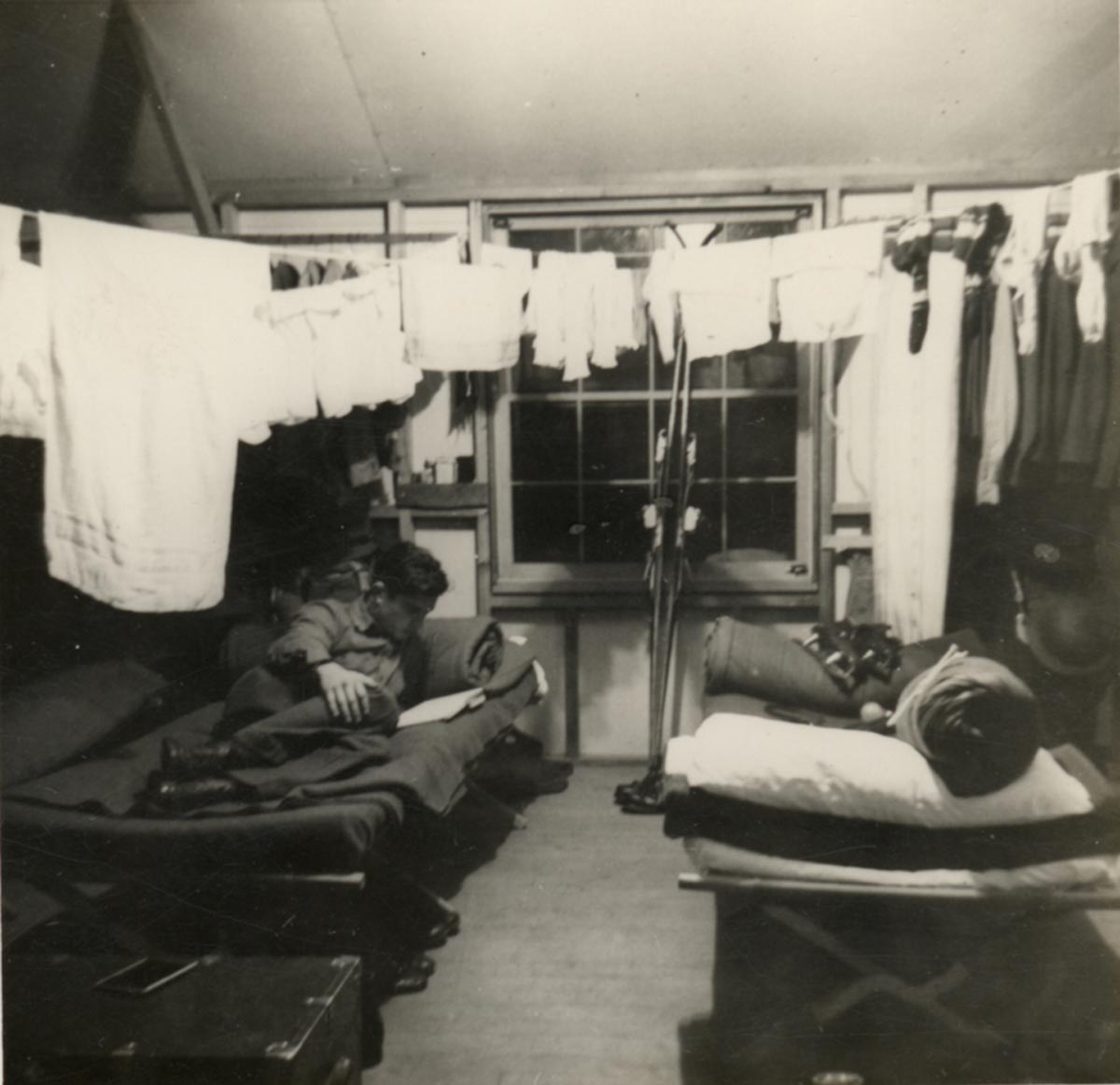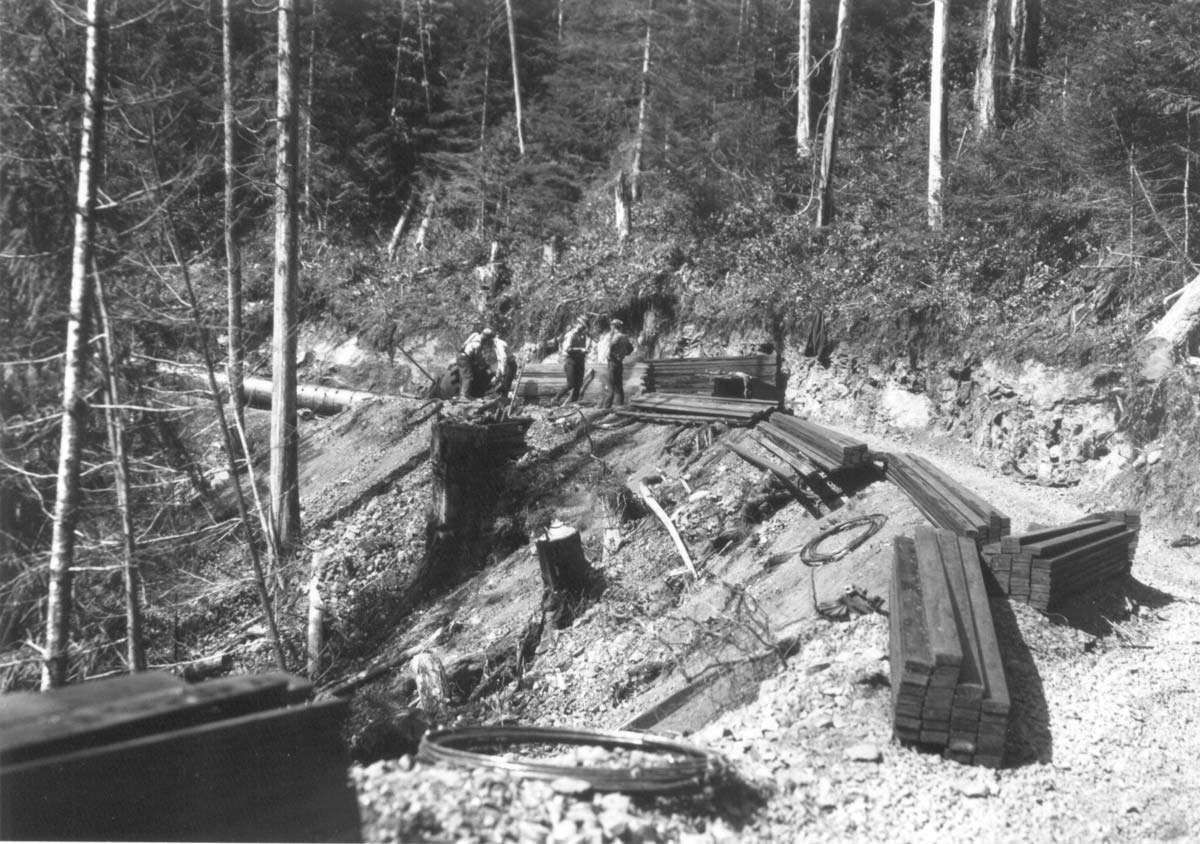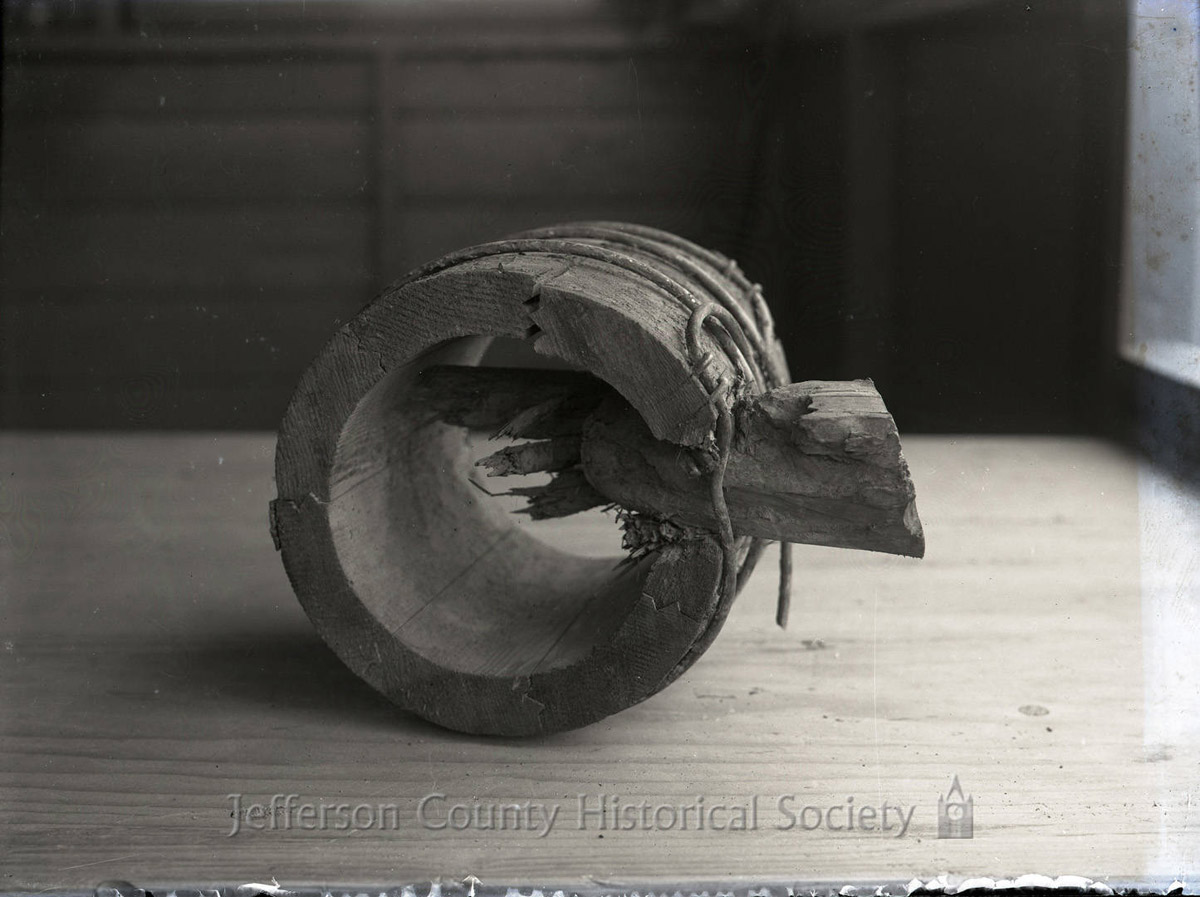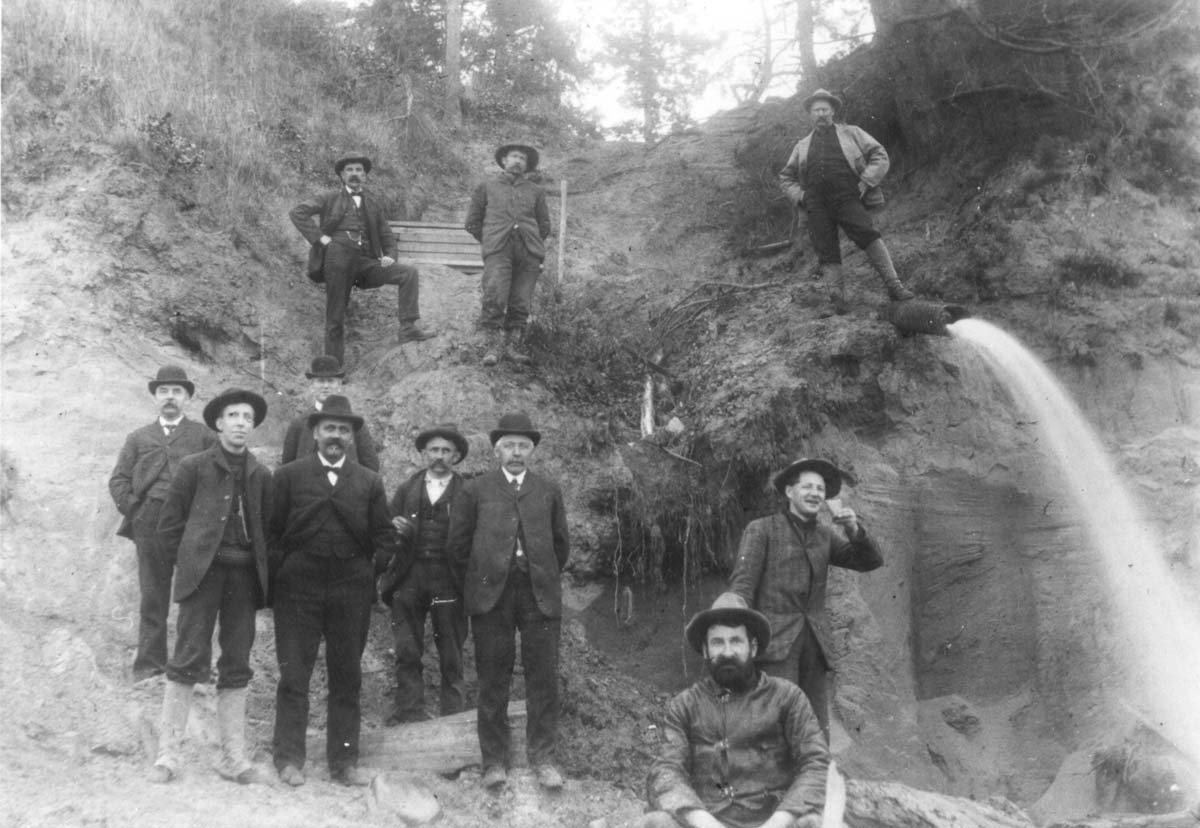Water
Where does your water come from?
Port Townsend sits at the tip of the Quimper Peninsula surrounded by salt water.
This maritime advantage proved less advantageous to a booming 1880’s sea port in search of fresh water for drinking and bathing.
Top image: Wooden, 30-mile long water pipe ca 1928 (JCHS 2005.75.425)
Wherever humans have settled, water has always been a critical resource. In the 19th century, as settlers moved into the Washington territory, individuals claimed the rights to the water of a stream or river much like a mining prospector claimed rights to a possible source of gold. A sign posted near a waterway sufficed to claim ownership.
Despite being surrounded by water, and frequently being flooded by high tides, Port Townsend struggled to meet its needs for fresh water. Washington didn’t develop a comprehensive water law until 1917. Learn more about Washington water law.
In the early 20th century, businesses and homes were charged monthly water rates based on their use. In 1904, A private home of six or less paid $1.50 for its first bath tub while hotels, boarding houses and barber shops paid $2.00 for the first tub and $1.00 for each additional tub. Bakeries, breweries, butchers and bricklayers all had their fees. A Port Townsend saloon’s monthly fees ranged from $3.50 to $7.50 for each water closet and urinal while a beer pump cost $1 (or by meter).

Laundry at Fort Flagler (JCHS 2017.41.80)
Port Townsend’s water is still supplied by the system developed in 1928 by the National Paper Products Company. In 15 months, engineers for the pulp and paper mill built a 30-mile wood stave pipeline connecting the city and mill with the Big and Little Quilcene Rivers in the Olympic National Forest. Fresh weather brought new life and stability into the city. This pipeline, with steel pipe replacing the wood pipe in the 1950s, is still in use, one of the oldest water systems in Washington State.

Construction of Big Quilcene pipeline

A piece of an old water pipe. JCHS 2003.134.98

Crews working to repair pipeline break
Learn More of Our History
